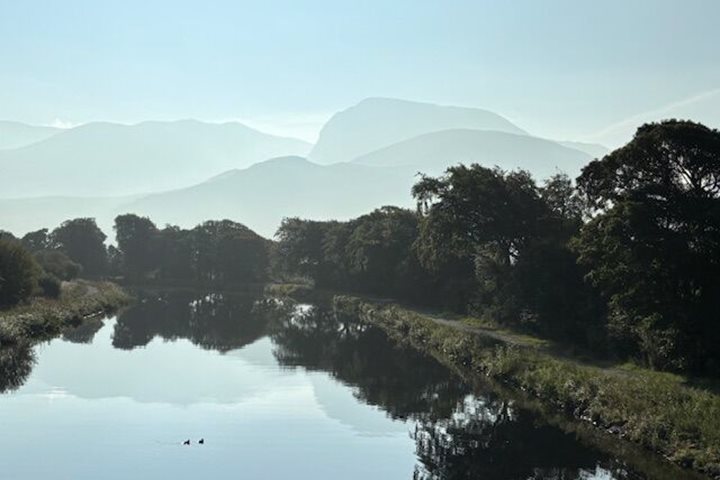This morning found us sailing down the Sound Of Mull to the ferry terminal of Craignure. Here we boarded a coach for the interesting ride along the south perimeter of the Isle of Mull. Our driver, Steve, gave an enjoyable running commentary about, well, everything and everybody on this wild and beautiful island. At Fionnphort we boarded the little ferry for a short ride over to Iona.
What Iona lacks in size, it more than makes up for in historical significance. This is a sacred place, where St. Columba founded his church in 563 A.D. Columba, a powerful Irish saint, was outlawed from his own land and came here with a handful of followers to convert the heathen Picts of Scotland to the Celtic Christianity of his homeland. Legend has it that more than 50 Scottish, Irish, and Norse kings are buried here, including MacBeth and Duncan.
Iona endured many atrocities over the centuries, including raids by the Vikings, and eventually the community evacuated to Kells, Ireland. Even so, many monks remained behind and continued to suffer martyrdom. The Benedictines took it over in 1203 and built the great monastery. It fell into ruin during the Reformation but was restored in the early 20th century.
As soon as we arrived, we walked up the main road to the ruins of the Iona Nunnery. It was founded by Reginald, son of Somerled of the Isles, and the first Prioress was his sister Beatrice. From there we continued to the Abbey. St. Oran’s Chapel, in the cemetery, was built by the Clan MacDonald, Lord of the Isles, in the 12th century and is the oldest ecclesiastical building on Iona.
In the early afternoon, we ferried back to Fionnphort and bussed back around Mull to Duart Castle, an impressive fortress on a headland guarding the approach to the Sound of Mull. The castle dates back to the 13th century and was the ancestral home of the Chiefs of Maclean until it was confiscated during the Jacobite uprising in 1745.
From the tip of Duart Point, we could see across the small bay to the baronial Torosay Castle, built in the 19th century. We could also see another Stevenson lighthouse gleaming in the brilliant sunshine. We also learned about the famous Lady of the Rocks, where a previous clan chief lashed his apparently infertile wife to a rock to be drowned. A passing fisherman rescued her and returned her to her father. The father produced her a year later to her surprised “aggrieved” husband and then killed him.
We once again boarded Lord of the Glens and set sail, this time for Oban on the mainland. Tomorrow we shall have a chance to explore Oban’s odd McCaig’s Tower, take a distillery tour, and do a little retail therapy.







